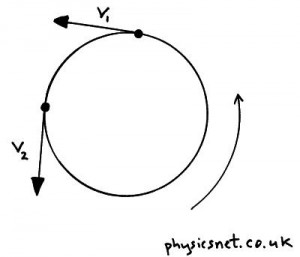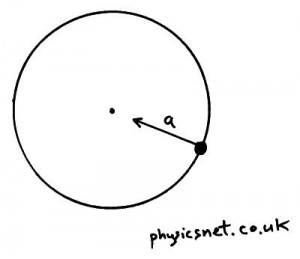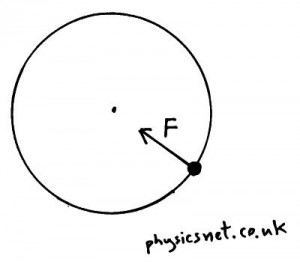Click here for Circular motion questions & homework
Click – answers for circular motion question.
Circular Motion
When an object moves in a circle at a constant speed its velocity (which is a vector) is constantly changing. Its velocity is changing not because the magnitude of the velocity is changing but because its direction is. This constantly changing velocity means that the object is accelerating (centripetal acceleration). For this acceleration to happen there must be a resultant force, this force is called the centripetal force.
Angular Speed – click for example questions.
The angular speed (w) of an object is the angle (q) it moves through measured in radians (rad) divided by the time (t) taken to move through that angle. This means that the unit for angular speed is the radian per second (rad s-1).
v is the linear velocity measured in metres per second (ms-1).
r is the radius of the circle in metres (m).
f is the frequency of the rotation in hertz (Hz).
Centripetal Acceleration
Centripetal acceleration (a) is measure in metres per second per second (ms-2). It is always directed towards the center of the circle.
Centripetal Force
When an object moves in a circle the centripetal force (F) always acts towards the centre of the circle. The centripetal force, measured in newtons (N) can be different forces in different settings it can be gravity, friction, tension, lift, electrostatic attraction etc.
Links to other pages;










